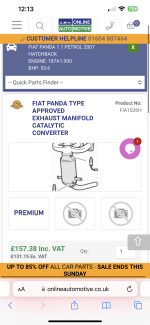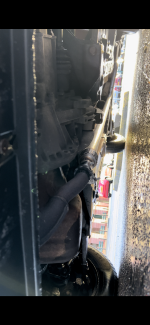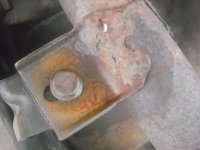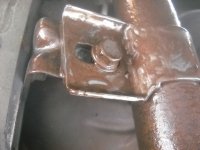- Joined
- May 10, 2010
- Messages
- 2,669
- Points
- 800
The problem with most ring spanners and some sockets is they have too many corners for the nut.
It's so you can fit the spanner on nuts at various degrees.
If you look at the image in the link you can see it's like a star rather than nut shaped.
 uk.rs-online.com
uk.rs-online.com
This means you're not gripping the nut properly, it's just catching on to the corners of the nuts flats and not contacting all of the nut.
With these type spanners/sockets there is a high chance the thing slips and rounds off the head on the nut/bolt if it's tight.
This is ok for most smaller nuts and bolts that's don't usually get fitted so tight but anything that's big and tight needs a proper fitting spanner or socket that fits the nut head completely, like https://www.screwfix.com/p/hilka-pr...ch/2369r#product_additional_details_container
As you can see it has just six flats, same as the nut so it fits better so you can apply the torque required to get it moving.
Same thing for an open ended spanner, you're contacting just a third of the nuts surface, not all of it.
Even if you start to round a nut off with the wrong type spanner you can often still get it to move by using the six sider as it doesn't just utilise the nut corners to grip the nut, which is why I wrote you need the right tool and linked to it.
For future reference, small nuts and bolts upto around a M6 (13mm spanner) are usually ok with a star type spanner/socket as they are only usually tightened to 12-18nm.
When the bolt/nut size increases the torque on them rises exponentially.
So a M12 doesn't just handle double an M6 (24-36nm) but usually handles 250-400nm.
It's so you can fit the spanner on nuts at various degrees.
If you look at the image in the link you can see it's like a star rather than nut shaped.
108-36 | SAM No, No Slogging Spanner, 36 mm | RS
This means you're not gripping the nut properly, it's just catching on to the corners of the nuts flats and not contacting all of the nut.
With these type spanners/sockets there is a high chance the thing slips and rounds off the head on the nut/bolt if it's tight.
This is ok for most smaller nuts and bolts that's don't usually get fitted so tight but anything that's big and tight needs a proper fitting spanner or socket that fits the nut head completely, like https://www.screwfix.com/p/hilka-pr...ch/2369r#product_additional_details_container
As you can see it has just six flats, same as the nut so it fits better so you can apply the torque required to get it moving.
Same thing for an open ended spanner, you're contacting just a third of the nuts surface, not all of it.
Even if you start to round a nut off with the wrong type spanner you can often still get it to move by using the six sider as it doesn't just utilise the nut corners to grip the nut, which is why I wrote you need the right tool and linked to it.
For future reference, small nuts and bolts upto around a M6 (13mm spanner) are usually ok with a star type spanner/socket as they are only usually tightened to 12-18nm.
When the bolt/nut size increases the torque on them rises exponentially.
So a M12 doesn't just handle double an M6 (24-36nm) but usually handles 250-400nm.






